Swapping sand for snow
Well, the COVID pandemic has again derailed my narwhal expedition, but never fear! I'm still learning and doing some traveling this summer!
Instead of going to the Arctic, I spent a few weeks studying in Boulder City, Nevada, in >110° degree weather - it was one of the hottest experiences of my life, but really drove home what climate change is doing to our planet. We studied at Hoover Dam (feeling first-hand the conditions that Depression Era workers were facing as they were building the Dam in the early 1930's) and seeing the historically low water levels in Lake Mead. Did you know that 7 states get their water from Lake Mead, and that Los Angeles and the Imperial Valley (where a LOT of our food is grown) depends on this water source? Not to mention the power generated by the dam, which is now threatened because there isn't enough water in the lake? It is really sobering to think about.
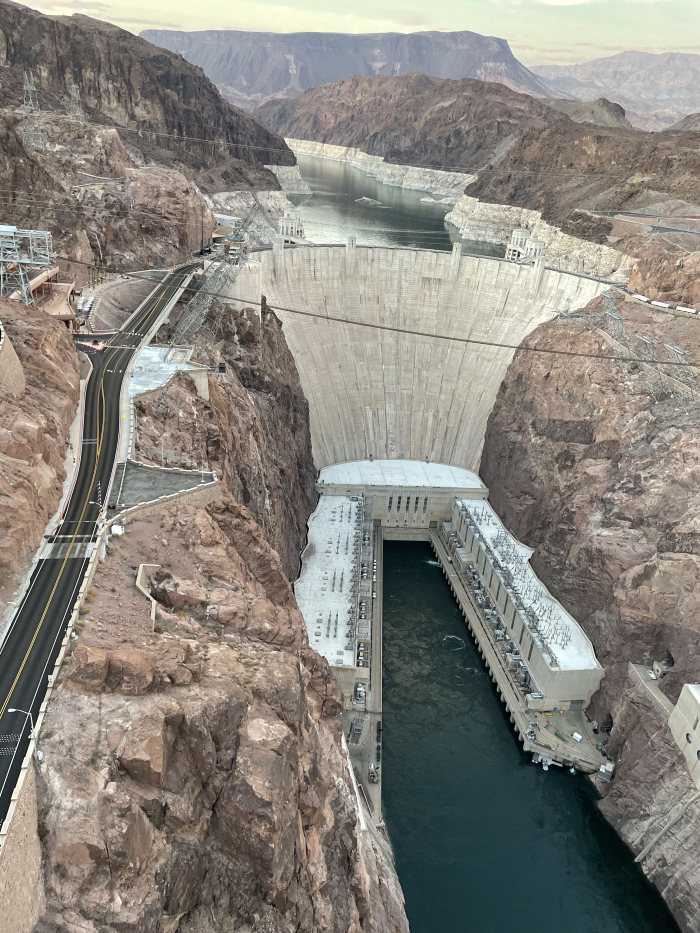
After my two weeks in Boulder City, I decided to take the long route back home, camping and visiting several natural wonders with my cousin Evelyn.
Cathedral Gorge
First stop was Cathedral Gorge, one of Nevada's state parks. This place is a true hidden gem, with some of the most remarkable geologic features that I've ever seen. A million years ago, the area was covered by a freshwater lake, which deposited a layer of silt. Over the years, rain and melting snow carved gullies and fissures into the siltstone, creating thin canyons known as caves. Unlike the slot canyons found in other areas of the Colorado Plateau, these aren't caused by flash floods, so many were so thin that we had to shimmy through sideways and ended in dead ends.
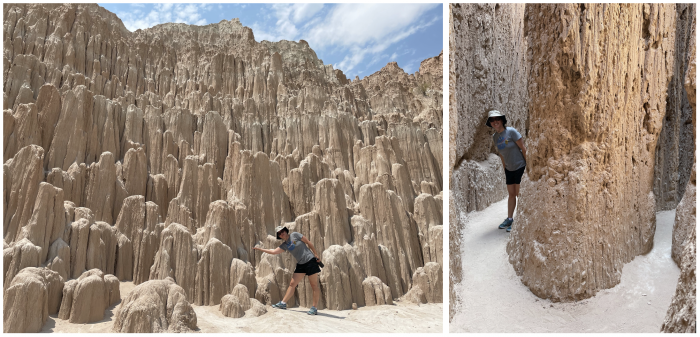
Great Basin National Park
Next was Great Basin NP, one of the least-visited units of all the National Parks. I'd always wanted go, but thought of it as basically being in the middle of nowhere (it's on the far east side of Nevada, bordering Utah - but it's only 4 1/2 hrs from Las Vegas and less than 4 from Salt Lake City - totally worth the drive).
One of the most famous things about Great Basin is its night sky - because of its high elevation and low light pollution, it is supposed to be amazing for stargazing. Unfortunately, the week we were there, the Bootleg Fire in eastern Oregon combined with other wildfires on the West Coast blew so much smoke that the haze blocked out much of our night sky. Another victim of climate change :(
Instead, we spent several days hiking around the park. Did you know there are glaciers in Nevada?? You can easily hike to one via the GlacierA mass of ice that persists for many years and notably deforms and flows under the influence of gravity. Trail, at an elevation of around 11,000 ft! They estimate the size to be about 2 acres, and will probably be gone in 20 years.
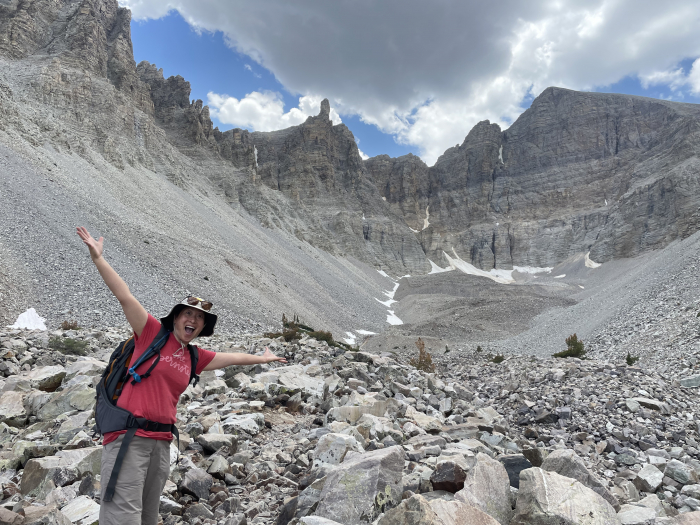
Did you know? The oldest living thing ever found on earth was a Great Basin bristlecone pine, found in the Wheeler Grove in Great Basin National Park - until it was accidentally cut down by a grad student in 1964. Called the Prometheus Tree, it was estimated to be over 4,800 years old! There's something sublime about hiking through a bristlecone forest, knowing everything around you is resilient and august. The hard, resinous wood is resistant to decay, so even the dead trees stay standing for thousands of years.
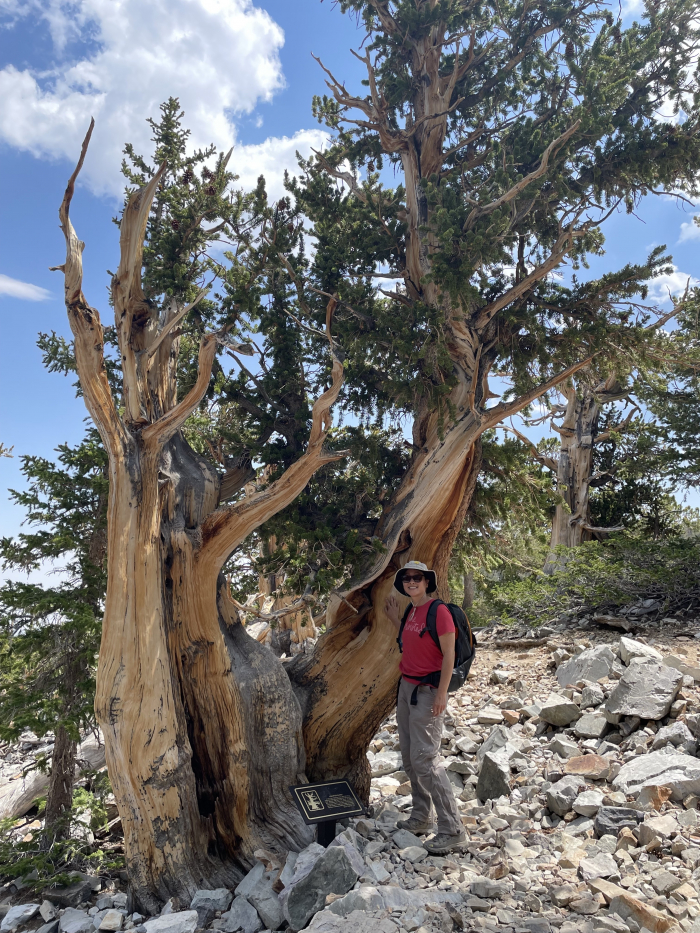

Cave shields are thought to be formed when calcium-rich water is squeezed through a joint or crack, building up plates of calcite precipitate parallel to the cracked wall. As more calcite is deposited, the plate grows larger in concentric rings, then water drips down to form the draperies.
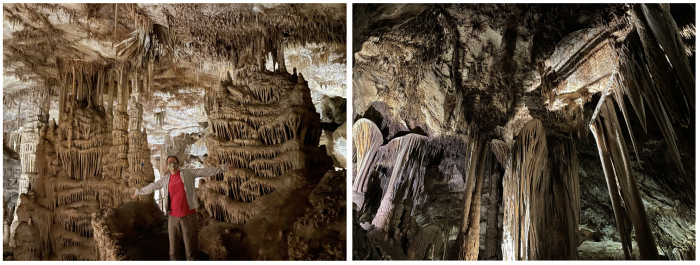
Highway 50 - the Loneliest Road
To get home, we drove across Nevada along Hwy 50 - known as the 'loneliest road in America.' This road partly follows the former route of the Pony Express - the horse-mounted mail service that ran for 18 months during 1860-61. There were around 186 Pony Express stations at 10 mile intervals from Missouri to California, and you can still see the ruins of some along the way. Sand Springs Station was buried under shifting sands after it was abandoned, but was rediscovered and excavated by archaeologists in 1977.
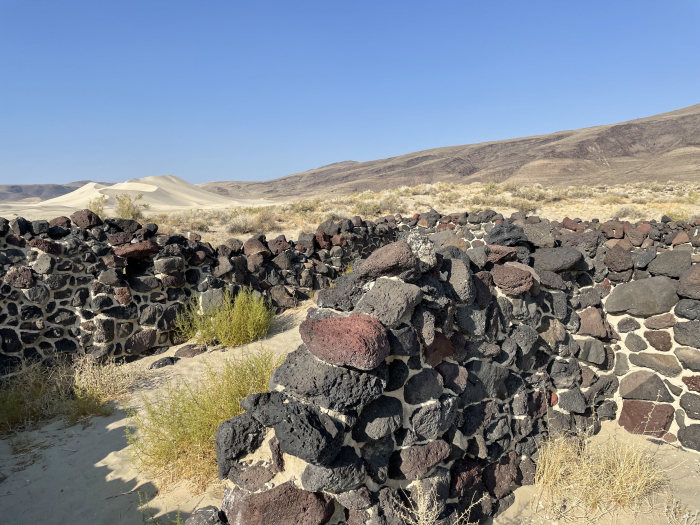
The Eastern Sierras
Back in California, we hiked Lundy Canyon through one of the most amazing wildflower blooms that I've ever seen. In one field of tall Sierra Larkspur, the hummingbirds were so numerous you could hear them chirping and buzzing all around!
The COVID pandemic has caused many people to go outside, and while I've heard that the National Parks are overcrowded, Great Basin is so remote that we didn't really see the throngs of people that other parks might face. But when we got to Devil's Postpile National Monument, we found the crowds. To get to the actual site, a mandatory shuttle bus is set up at Mammoth Ski Resort, and the lines were LONG. We waited over an hour and a half to get to the trailhead!
The postpile is an interesting geologic feature created when a 400-foot deep pool of molten lava formed parallel cracks to relieve pressure as it cooled. Later, a glacier moved over it, carving and polishing the top. You can easily see the hexagonal formations formed by the cooling lava, and the glacial striations marking the direction where the formation was rubbed. This can clearly be seen from the top of the postpile, so I found it odd that when we got to the top, we were the only ones there. Given how many people were crowding onto the bus to get into the park, you'd think there'd be a throng trying to see this natural wonder. After talking to the ranger, we found out that most people don't bother hiking to the top, even though it isn't a very long detour. While I'm glad more people are trying to get out to enjoy nature, I do think some people actually need to be taught to appreciate nature...
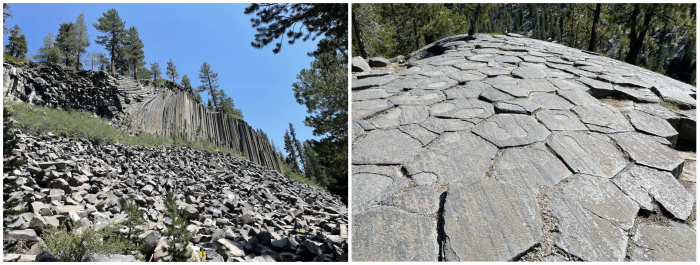
Overall, it was an amazing trip and it was so good to be back out in nature.



Comments